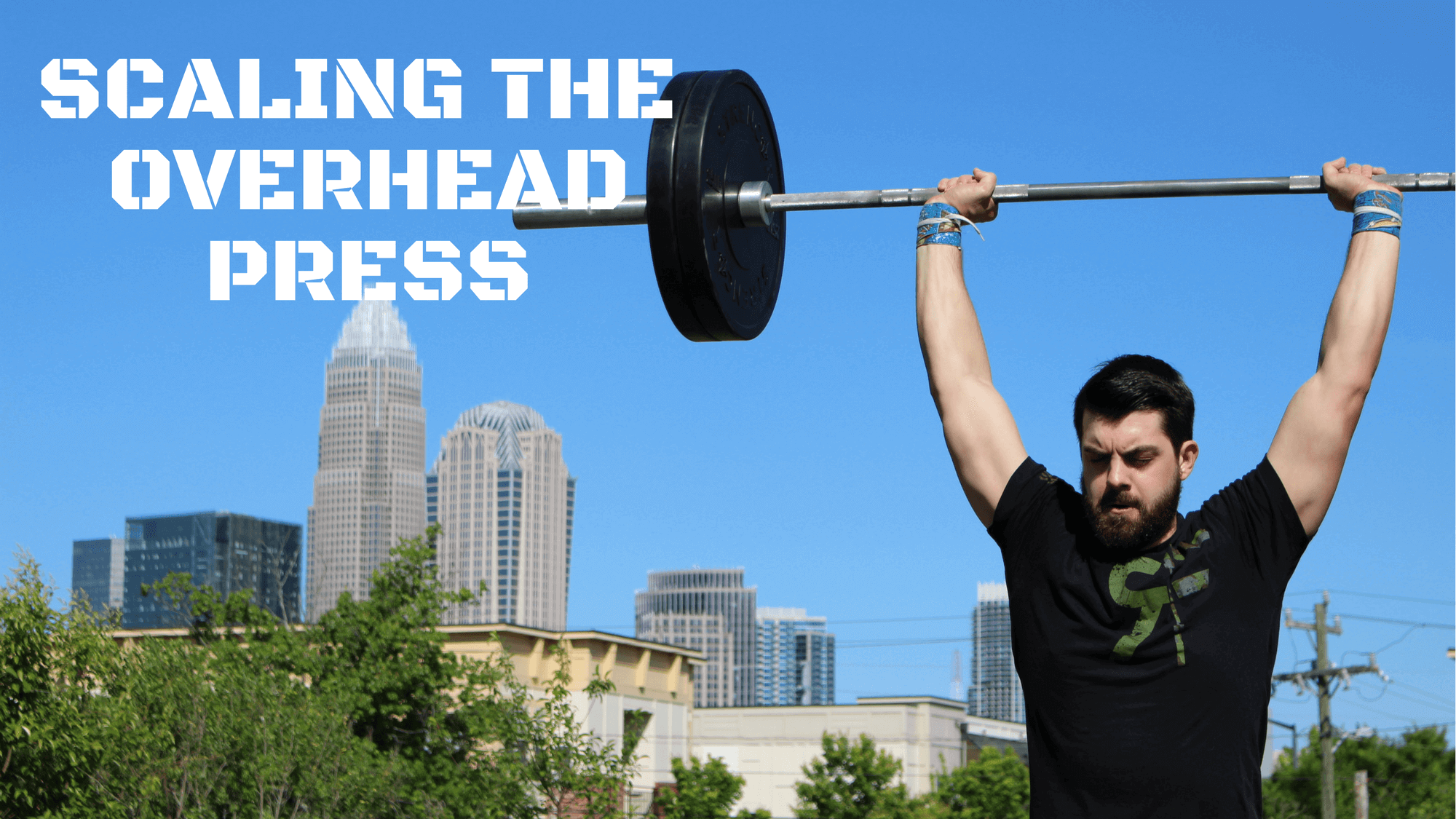The best fitness professionals have a plethora of exercises they can pull out at a moment’s notice to scale a movement based on a client or athlete’s needs. Unfortunately, far too often, we see programming without sufficient scaling options to ensure safe and effective workouts for all gym members. Join Dr. Zach Long (The Barbell Physio) and Dr. Andrew Millett in this series on scaling exercises to serve best the clients you work with (or yourself). This week we’ll cover: Scaling The Overhead Press (and its variations)!
Scaling the Overhead Press
Landmine Press
The landmine press is a great way to begin a more vertically-directed movement without fully challenging overhead motion. For those with significant shoulder mobility limitations or recovering from an injury, the landmine press is a great start!
The landmine press can b,e performed in half-kneeling as shown below, tall kneeling, or standing. Add weight and/or bands to challenge the athlete differently as well. You can also add in a little leg drive to make a scaled version of the push press as well!
KB Kneeling Press
The Kettlebell kneeling press is another go-to drill for athletes recovering from an injury or needing overhead loading with decreased weight. This can be performed with the bottom of the kettlebell down or positioned upward as in the video for added shoulder stability demands.
Feet Elevated Pushups
Feet Elevated Push-Ups can be used to help progress someone back to pain-free overhead pressing. It is a more challenging movement than the strict push-up due to the feet being elevated. This also places a greater demand on core stability due to the angle of the trunk. It is not overhead pressing, but it can be a great stepping stone to work your way back to overhead.
If this is a movement that you have never performed before, start by placing your feet on a low box or step. Assume a plank position by maintaining a neutral spine. Slowly lower yourself to the ground by squeezing your shoulder blades into your back pockets. Think of bringing your face to the ground versus your chest. By bringing your chest to the ground, this can place increased stress and strain on the neck, shoulder, and low back. Then push the ground away from you, push your shoulder blades apart, and return to the starting position.
Incline Bottoms Up KB Press
The Incline Bottoms-Up KB Press is another way to progress back to overhead pressing. By using a bottoms-up kettlebell, the instability of the kettlebell forces the rotator cuff to reflexively contract and stabilize the humerus in the socket. This is imperative to be able to do when going overhead to allow for proper centering of the joint as well as decreasing for potential for irritation to the shoulder.
Start on an incline bench. Press the bottoms up kettlebell into the air. As you press, the kettlebell will wobble and feel unstable. Control and own the movement. As you bring your arm back down to the starting position, make sure that your elbow doesn’t go past the plane of your body. This can potentially lead to irritation of certain structures at the shoulder.
Bottoms Up Waiter Carry
The Bottoms Up Waiter Carry is similar to other bottoms up kettlebell work in that it forces the athlete to have to stabilize against a destabilizing force. By walking with the bottom-up kettlebell, every step creates an instability that the athlete has to work to control. This is great for overhead pressing, jerking, snatching, etc.
Start by either swinging the kettlebell overhead from your side or using your other arm to assist in getting it into the starting position. Then walk. As you walk, don’t shrug your shoulder towards your ear and don’t pack your shoulder blade into your back pocket. Maintain a solid neutral position as you walk.
KB Bottoms Up Baby Get-Up
The KB Bottoms Up Baby Get-Up is an abbreviated version of the Turkish Get-Up. Performing this movement allows the athlete to work into increased ranges of motion when working to get back to pain-free overhead pressing. As stated before, the bottoms up kettlebell provides a factor of instability.
Start on your back. Hold a bottoms up kettlebell overhead. Using the leg on the side in which you are holding the kettlebell, push your foot into the ground and come up onto your opposite elbow. Make sure the elbow is directly under the shoulder when coming up onto the elbow. Then prop up onto your hand. To return to the ground, return to the elbow and then back to the ground. Make sure to control each portion of the movement.






